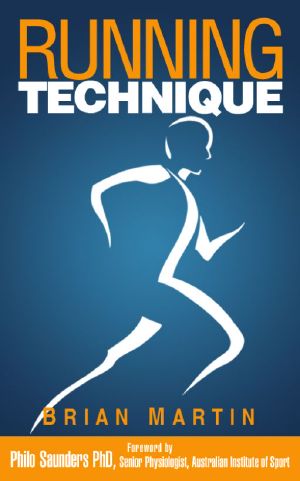Running Technique

- Authors
- Martin, Brian
- Publisher
- Brian Martin
- Tags
- minimalist running shoes , beginner running , learn running , self help , running form , strength training , running training , running injuries , barefoot running , health , running technique , running tips
- Date
- 2011-08-04T00:00:00+00:00
- Size
- 1.93 MB
- Lang
- en
A practical guide for distance runners to learn and train for the fundamentals of good running technique. Recognize problems with running form that cause injury, or frustrate achievement of your goals.
With so much focus on getting big miles into your legs it’s easy to overlook the importance of developing the strength and coordination needed to run with good technique. This book helps beginner runners learn the basics of good technique and explains how running better will help prevent injuries as you train towards your goals. Experienced runners can use the book to evaluate their form and develop new strategies to enhance performance and avoid injury. Coaches can use the book to help assess how well their runners are moving.
With foreword by Philo Saunders PhD, Senior Physiologist, Australian Institute of Sport: "When Brian asked me to write the foreword to his book I agreed instantly as it covers a critical aspect of successful running. This book is easy to read and based on sound scientific research. It provides practical advice on how to improve technique for runners of all abilities and will be a valuable resource for distance runners."
Using simple explanations of how elite runners move, Running Technique takes the reader through a discussion of what good running technique looks like and explains the underlying muscle activation patterns and postures that drive good technique. Runners are shown how to recognize technical weaknesses that can lead to injuries and a guide on doing your own gait analysis gives you a head-start on identifying any issues with your form.
The book provides a framework for runners to gradually improve their technique by explaining how training for strength, coordination and technique gives you a greater chance of avoiding injury and achieving better performance levels. The direct relationship between strength training and running technique becomes clear as the book explains why this training enables any runner to start developing efficient muscle activation patterns to run with better technique.
Running Technique takes the reader through simple exercises and muscle activation drills that can be done anywhere without equipment. Each exercise is explained so you know which muscles to activate during each phase of the movement and how this relates to running. The book also provides a framework for assessing the usefulness of any strength exercise in relation to improving running technique.
This book does not promise an easy path to perfect running technique, but rather provides a practical methodology for moving through phases of improvement and skill as a runner. This allows runners to step into the framework in a way appropriate for their experience and ability. The first phase involves learning to activate the correct muscles at the right time, the second to stabilize and strengthen the hips - the engine room of good running. Finally, for advanced athletes, there are ideas for fine tuning technique and training for power and speed.
The book includes a chapter about running shoes and barefoot running and shows why wearing minimalist shoes or going barefoot provides a useful stimulus for improving technique but is not an end in itself. Running Technique explains that gradual evolution towards minimal shoes and barefoot running should only be attempted once the muscle activation patterns to run with good form have been established. There is also information on selecting the right shoes for your technique.
Finally, the book details how popular training approaches can be modified to be more forgiving on runners with imperfect mechanics. Running Technique brings together three ideas that justify taking technique seriously: running should be enjoyable and mostly pain free, injuries should be the exception, not the rule and improvements ar